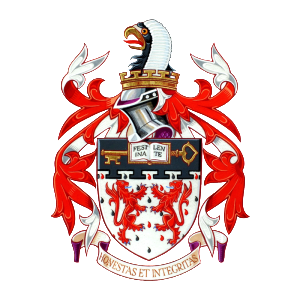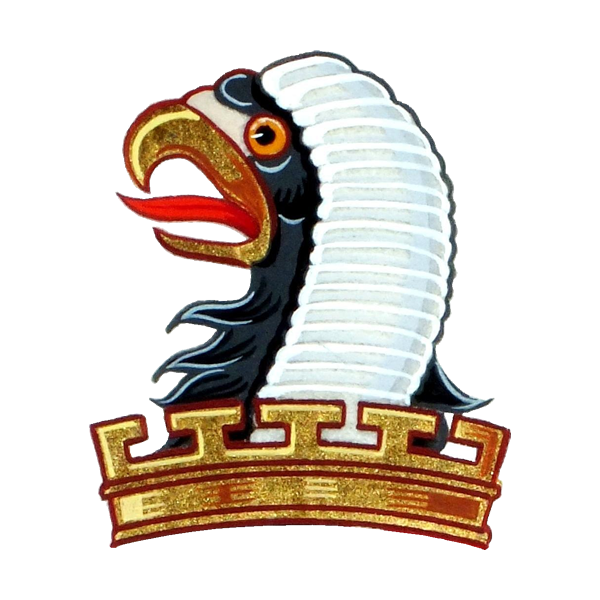- Home
- Information
- Coat of Arms
Coat of ArmsThe following article was first published in the Institute Journal ‘IMPACT’ in Spring 1997 (Vol 6 No 1) and explains the significance of our Coat of Arms. Origin From the formation of the Institute of Traffic Accident Investigators, requests were made of members and friends to produce a badly needed logo. Some 40 designs were received but although many were well thought out, something was always missing: they were not prestigious. Approaches were made to at least one Art College and a promised money donation was given. The results were similar to those produced by our own members, as were the feelings of Council. A friend of mine relates the following true story. His colleague in the Middlesex Heraldry Society has a son in a law firm that required a logo to express its new corporate image. This colleague suggested that the law firm apply for a Grant of Arms. The lawyers (24 of them), applied instead to a commercial company for a logo or badge to be designed especially for them. The result was that the capital letter of their firm’s title was redesigned and coloured green, and all for the going rate of only £90,000. Since hearing this story I have heard many similar accounts with equally frightening and unrealistic price tags. Most of our DIY designs would beat that. Being prompted by that same friend, I proposed to Council that as representatives of a professional corporate organisation, we should go for a unique, recognisable badge, that will be viewed seriously by any professional person having business with, or who has an interest in, the Institute. Historically the most prestigious badge would be a ‘Coat of Arms’. The proposal made on 11 May 1994 was that we apply to the College of Heralds for a ‘Grant of Arms’. I think it is fair to say that despite having been circulated with the details well before the meeting, Council members were initially shocked at the seriousness of the proposal. However, once discussed, it was probably one of the quickest decisions ever made. Council agreed the proposal and ‘naturally’ the proposer was awarded the task. The first informal enquiries were made to the College of Arms on 24 May 1994. Following agreement by Council on 7 September, a formal application was made. Dr Richard Lambourn and Mr Les Stilwell volunteered to help and a sub-committee was formed to assist with the design, should we ever get that far. When it came to the crunch, a great deal of assistance was given by a friend of the Institute, Mr Roger Matthews, who has experience in both fields. Following our application, I was advised that Arms are seldom granted to organisations that have been in existence for less than 20 years, otherwise inappropriate institutions such as ‘boys’ clubs’ that are ‘here today, gone tomorrow’ would be applying. Later however, I was advised that having studied our membership and Constitution, the College of Arms recognised that our Institute was made up of professional people who have already spent many years in their profession and who are well qualified. As a result it was decided that our application would be forwarded for approval. Why a coat of arms?
Perhaps the true reason for the evolution of Armory is explained by both concepts, which have been only briefly outlined above. When applied to a body of men and women such as an army or an organisation like ours, I feel that it is still appropriate to be proud of what we stand for and our achievements, and most of all to be recognised. Procedure in obtaining our grant
The Institute of Traffic Accident Investigators received written notice on the 2 July 1996 that ‘Garter King of Arms’ had officially approved the designs for our arms, crest and badge. The Institute may now use these designs pending the preparation of the ‘Letters Patent’ which actually makes the Grant.
ARMS Argent, Goutte’ de Sang and de Poix, two Lions combatant Gules on a chief potenty, Sable, a Key fesswise wards to the dexter Or surmounted by an Open Book Argnt edged Gold bearing the words festina lente Sable.
CREST Upon an Helm a circlet potenty on the upper edge Or issuing there from an Eagle’s Head Sable beaked Or Langued Gules furnished with a High Court Judge’s Wig proper. MANTLlNG – Gules doubled Argent MOTTO – honestas et integritas
BADGE A Key Wards upwards and outwards and a Quill point downwards in saltire enfiling a Circlet potenty on the upper edge Or. Description and explanation for our blazon
Any heraldic artist will produce the above arms from the ‘blazon’ (heraldic description) which is written below the Grant of Arms. They must all show the described charges and tinctures correctly, but of course, one artistic interpretation could differ from another. The important thing being that any observer will immediately recognise any charge depicted by different heraldic artists, i.e. a lion looks like a lion and a sword looks like a sword, etc. When the Arms are granted, they are painted by the herald artist, and then passed to the ‘scrivener’ for writing. The Arms are then returned to the college for the great seals to be attached. They will be the seals of the three Kings of Arms: Garter, Clarenceux, and Norry & Alster, Kings of Arms. Also at the top of the Grant will be the Royal Arms with the Arms of the Duke of Norfolk, Earl Marshal, and those of the College of Arms on either side. The following is a paragraph taken from a letter written by a well-recognised heraldic expert and dated 20 August 1996: “Many thanks for your welcome letter, and the copies of the arms of the Institute of Traffic Accident Investigators, which I think are both very apt and heraldically splendid. I particularly like the two lions about to engage in duffing each other up, the drops of blood and the legal eagle. The composition just shows that heraldry can be fun, whilst at the same time adhering to medieval ideas of recognition and pomp. Altogether, I like it. Congrats. I cannot think of a better way to describe ‘heraldic road rage’.” It must be noted that the full achievement (full Coat of Arms) can only be used on letters from the Chairman or from Council, and only then for official ITAI business, or if the Council approves its use for media display, or publications, etc. The Council will now have to decide when, and who can use the Arms, Crest and Badge. Written for Impact by Ian Mackenzie |



